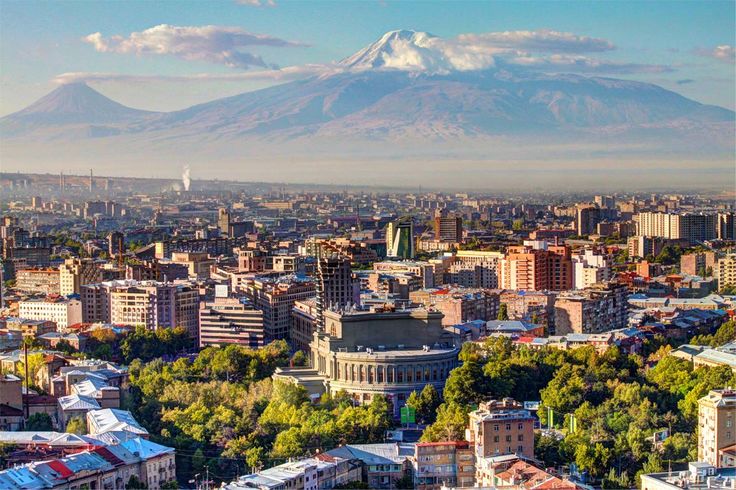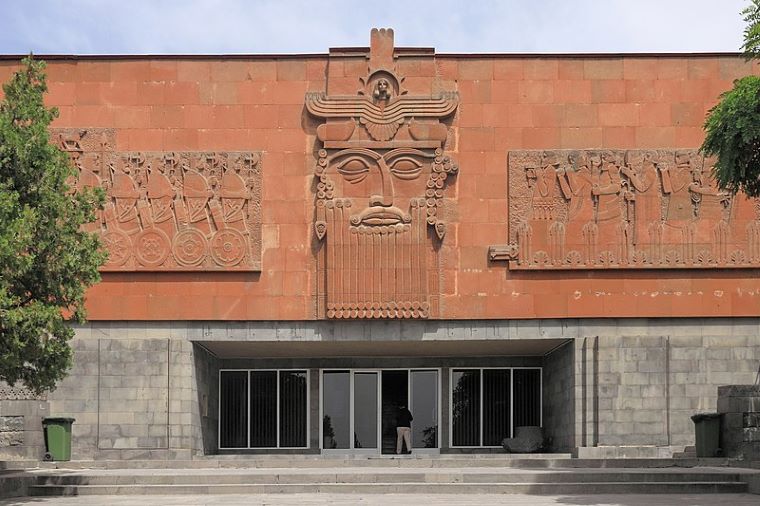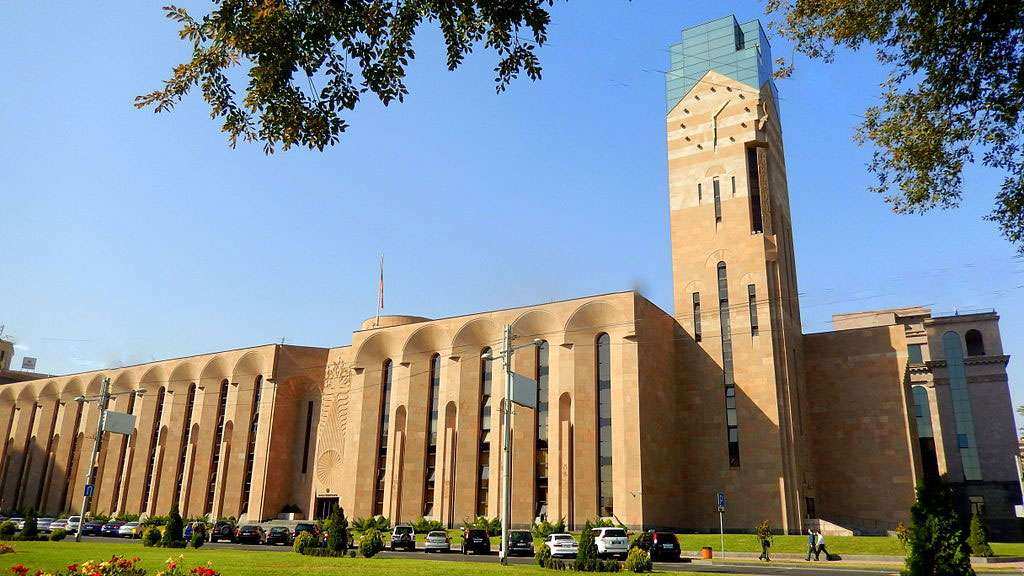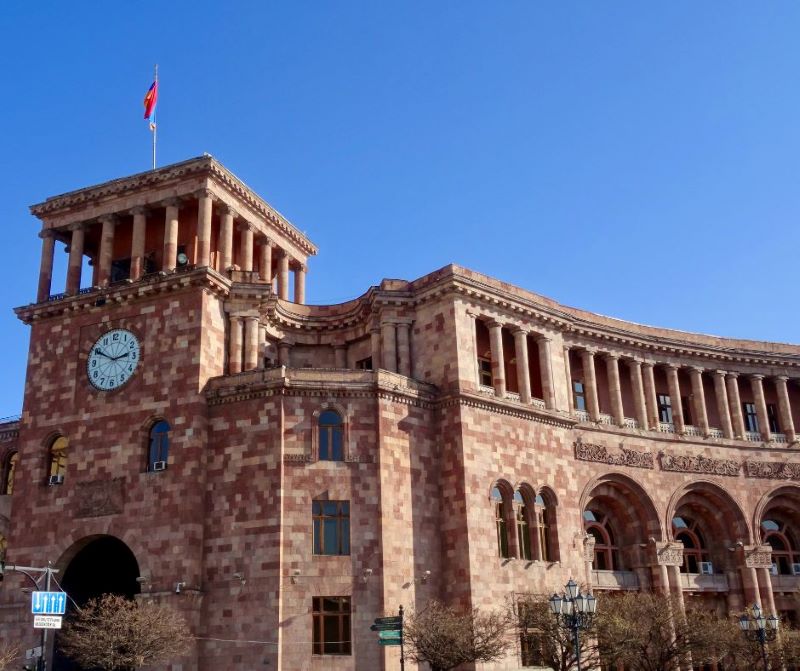
Any tourist visiting Armenia starts his journey from its capital city. Yerevan captures tourist’s attention with its pink buildings, unique beauty, and vibrant culture. Although, the history of Yerevan spans millennia, not many historical buildings are preserved due to invasions, wars, and being a part of different empires.
As you stroll through its bustling streets, you feel yourself in a modern city but with the unique charm of its past. When it comes to tourists, Yerevan is a great city to tour. Downtown Yerevan is not big and it’s easy to walk to nearly all main sites.
When Was Yerevan Founded?
Yerevan has its origins deeply rooted in ancient history. In 783 BC, during the fifth year of his reign, King Argishti I established the fortress town of Erebuni, which is known today as Yerevan. The founding of Erebuni is well-documented through an inscription on a stone slab, which vividly describes the king’s intentions and achievements.
According to this inscription, King Argishti I, inspired by the greatness of the god Khaldi, built Erebuni as an impregnable fortress to assert the power of the Biaina land and to instill fear among its enemies. He proudly stated that he transformed an uninhabited land into a significant stronghold.
The transformation of the name from Erebuni to Yerevan is linked to phonetic changes over time, where the Urartian ‘B’ sound evolved into a ‘V’ sound in the Armenian language.
Erebuni-Yerevan became a major administrative, economic, and military center, initially populated by 6,600 soldiers, and over time, it played a crucial role in the region’s socio-economic development.
Numerous caravan routes passed through Yerevan throughout its history, becoming a bustling trade center. Archaeological excavations have highlighted its role as a significant administrative hub in the Ararat valley. Despite suffering through various invasions from Assyrians, Romans, Byzantines, Persians, Arabs, Seljuks, Yerevan endured and thrived, fostering a rich cultural and scientific landscape.
Erebuni Museum

The Erebuni Historical-Archaeological Reserve Museum is one of the places where you can see the real history of Yerevan. The museum is one of the parts of any historical or archeological tour.
It was established in 1968 to commemorate Yerevan’s 2750th anniversary. It is located at the base of Arin Berd hill, where the Urartian Fortress of Erebouni has stood since 782 BC. The fortress, known for its strategic importance and architectural grandeur, has undergone extensive excavations and restorations. Moreover, it was converted into an open-air museum that draws visitors to this day.
The museum holds an impressive collection of over 12,000 artifacts, including ceramics, bronze bracelets, and intricate glass and agate beads. The artifacts offer a glimpse into the daily life and customs of its past inhabitants.
Here you can see the walls and parts of towers that were built hundreds of years ago. The museum also hosts performances, pottery workshops, and other events.
The museum complex extends beyond its main site with branches in Shengavit and Karmir Blur. There are thousands more artifacts that further enrich the narrative of Urartian and subsequent civilizations in the region.
Yerevan History Museum

Another great place to find a great collection showing historical artifacts is the Yerevan History Museum. It houses a vast collection of around 94,000 items that span Yerevan’s history, from its prehistoric settlements to contemporary times.
Its treasures include archaeological artifacts such as obsidian tools, which date back over 100,000 years. There are also artifacts from the Shengavit settlement, which reveal life approximately 6,000 years ago. Moreover, there are relics from various medieval churches. Another highlight is personal items that narrate the stories of influential Yerevan families who shaped the city’s trade, industry, and culture.
The museum boasts a numismatic collection, fine arts, and an array of photographs that document the city’s evolution.
The museum is located within the modern Municipality of Yerevan building in downtown Yerevan.
Yerevan’s Pink Stone Architecture

The first thing tourists catches tourists’ eye in Yerevan is the distinctive pink color of its buildings. This unique coloration comes from the extensive use of local pink volcanic tuff stone in the construction of its buildings. Particularly striking during sunrise and sunset, the pink stone bathes the city in a warm, glowing radiance that shifts subtly throughout the day as the sunlight changes.
The origin of Yerevan’s pink buildings dates back to the city’s redevelopment and reconstruction under Soviet rule. Following the First World War, Yerevan emerged as Armenia’s capital. In 1920 the city underwent significant transformations under the architectural vision of Alexander Tamanyan. His design plans led to a dramatic reconstruction of Yerevan, replacing many older structures with modern Soviet-era buildings with pink tuff stone. This is the reason the buildings in Yerevan differ from the typical gray Soviet urban architecture.
The pink tuff, scientifically known as compacted volcanic ash, offers a range of shades from light pastels to vivid coral. Yerevan, the pink tuff is typically used in upper building levels, where its ease of carving and uniform texture are advantageous for architectural detailing.
Although new construction materials can be seen in Yerevan, the city’s iconic pink buildings are its signature.
Unlock Yerevan with Levon Travel
Unlock the vibrant city of Yerevan and the rich landscapes of Armenia with Levon Travel. Renowned for offering extensive tours throughout the capital city and beyond, the agency provides the best travel services in Armenia.
From well-crafted city tours to immersive experiences across the country, Levon Travel is your gateway to discovering Armenia.
